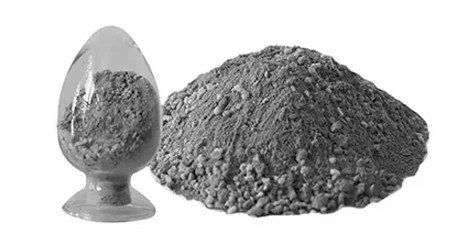PRODUCTS
Refractory Concrete
Refractory aggregate is the skeleton of refractory concrete and plays an important role in the high-temperature physical and mechanical properties of it. It has many varieties, and any raw material that can be used to make refractory bricks can be used as refractory aggregate. Refractory powder can improve some properties of cement binders, reduce the amount of cement, increase the workability of refractory concrete mixtures and the density of concrete, and improve fire resistance. At the same time, refractory powder can react with certain inorganic binders to cement and adhere the refractory a
Composition: Premium materials such as high alumina oxide, magnesium oxide, and silicon carbide, with customizable composition based on client requirements.
Form: Available in powder, brick, board, and castable forms to suit various application needs.
Refractoriness: Standard range from 1200°C to 1800°C, with options for higher temperature customization.
Application Fields: Widely used in industries such as steel, cement, glass, and petrochemicals for furnace lining and insulation.
Packaging: Options include 25 kg bags, bulk bags, and custom packaging solutions compliant with global transportation standards.
Introduction
Our experienced R&D team can customize the material, form, and size according to your specific application needs while ensuring compliance with international quality standards. With rigorous quality control and advanced production facilities, we guarantee products with high refractoriness, excellent compressive strength, and long-lasting durability. Whether you are in the steel, cement, glass, or petrochemical industry, we are your trusted partner, supporting the success of your projects.
For customization inquiries, please feel free to contact us. We will provide tailor-made solutions based on your requirements.
Refractory Concrete Details
Refractory aggregate is the skeleton of refractory concrete and plays an important role in the high-temperature physical and mechanical properties of it. It has many varieties, and any raw material that can be used to make refractory bricks can be used as refractory aggregate.
Refractory powder can improve some properties of cement binders, reduce the amount of cement, increase the workability of refractory concrete mixtures and the density of concrete, and improve fire resistance. At the same time, refractory powder can react with certain inorganic binders to cement and adhere the refractory aggregates, giving them strength and high-temperature physical and mechanical properties.
Features
1.The process is simple. The molding, drying and firing equipment used to produce refractory bricks is not required.
2.Easy to shape. No matter how complex the shape and size of the structure is, it can be poured according to the formwork.
3.Good integrity. Refractory concrete can be continuously poured and constructed, and the kilns and thermal equipment built have good integrity.
Application
1. Furnaces and Kilns: Refractory concrete is often used to construct the linings of industrial furnaces, kilns, and ovens. These linings provide insulation and protect the outer shell from the intense heat generated during processes such as metal smelting, glass manufacturing, and ceramic production.
2. Foundries: In foundries, where metals are melted and cast, Itis used to create the linings of crucibles, ladles, and other equipment. It can withstand the extreme temperatures required to melt metals like steel and iron.
3. Incinerators: It is used in the construction of incinerators and waste-to-energy plants. It can handle the high temperatures generated during the combustion of waste materials without deteriorating.
4. etrochemical Industry: Refractory concrete is employed in the construction of equipment like reactors, flares, and reformers in the petrochemical industry. These applications involve high-temperature processes in the production of chemicals and fuels.













